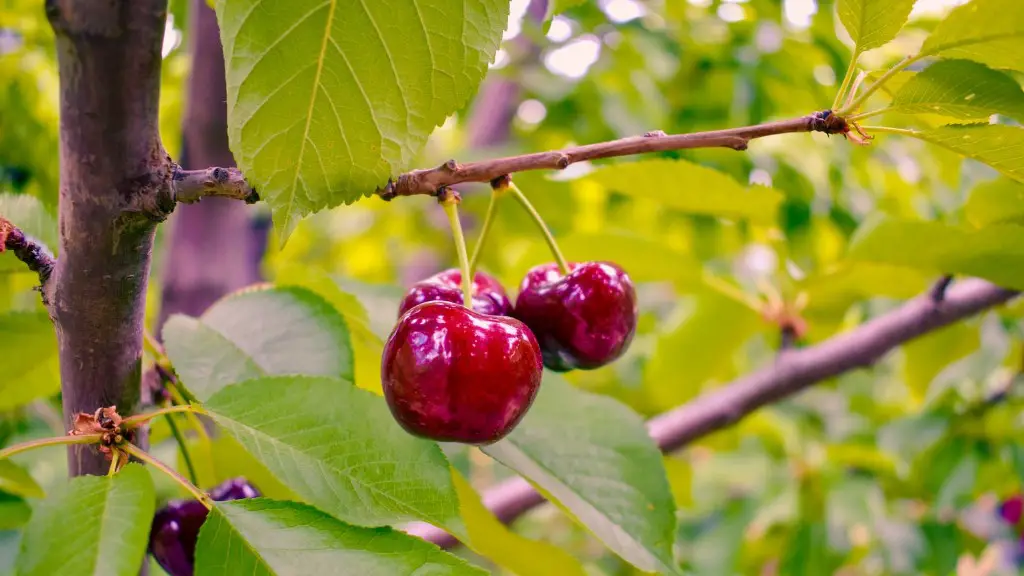Apple trees need pruning while they are in the dormant period between late fall and early spring. This is because apple trees tend to overproduce, and pruning helps keep the tree healthy and encourages more robust fruiting the following season. Pruning during the late fall has several key advantages, so if you haven’t pruned your tree recently, now is the best time to do it. Here’s what you need to know about pruning your apple tree in the fall.
Tools Required
To begin, make sure you have all the necessary tools. You’ll need long-handled loppers, pruning shears, garden saws, and sharpening tools. You’ll also need a ladder to reach higher branches. Get all of your tools together before beginning the job, to ensure that the pruning is done properly.
Types of Pruning
When pruning your apple tree, there are two types of pruning to consider: thinning and heading back. Thinning involves removing entire branches to reduce overcrowding and increase air circulation. Heading back involves cutting back to live buds to increase the number of terminals and promote fruiting. Make sure you know what type of pruning you need to do, and plan your pruning job accordingly.
Inspection
Before you begin pruning, inspect the tree for any signs of damage. Pay attention to any signs of disease, crowding, pests, and dead wood. If you find any of these, it’s best to prune them away before continuing with your pruning job.
Pruning Techniques
Start by cutting out any dead or diseased branches. If a branch is dead, cut it flush with the trunk. If it’s only partly dead, cut it back to a point just beyond the dead wood. Be careful not to leave any stubs, as they could encourage rot or disease. If you come across a branch that’s severely overcrowded, cut it down to a lateral branch or leave a space of two or three inches.
Methodology
When choosing where to make a pruning cut, look for a branch with a “bark collar”—the ridge between the branch and trunk. Prune the branch just beyond this ridge. This is where the branch has grown from the trunk, and cutting beyond it will avoid any damage to the trunk. When cutting, make sure you cut just above the bud, so that it will point outwards from the trunk when the branch regrows.
Excessive Pruning
Avoid pruning excessively, as this will remove too much of the tree’s canopy and reduce the amount of fruit it can produce. You should also avoid pruning when the ground is wet, as this can spread disease or damage the bark. The best time of day to prune is in the morning, when the tree is dormant and easily molded.
Protection
To protect your apple tree, cover the exposed bark and cuts with a tree-pruning sealer. This will prevent disease and rot, and will help the tree heal faster. When finished, water the tree thoroughly and apply new mulch around the base to help retain moisture and protect against frost damage.
Sharpening
Finally, when you’re done pruning, be sure to sharpen your pruning tools. This will ensure that they will be in good condition for next time. To sharpen your tools, you’ll need a sharpening stone, oil, and elbow grease.
Tree Life
Late fall is the best time to prune apple trees because of the dormant period, allowing cuts to heal quickly. Keeping your trees healthy and pruned properly will promote more robust fruiting the following season and will help keep pests away. With a little effort, you can ensure that your apple tree will remain healthy long into the future.
Timing
When pruning, timing is key. Avoid prune when it’s too hot or too cold, as this can damage the tree’s health. You should also avoid pruning when it’s too dry, as this could cause the cuts to ooze sap and provide an opening for disease. Try to prune when temperatures are easily above freezing but not too hot.
Planning
Before you begin pruning, plan your job carefully. Make sure you know what type of pruning is needed and what tools you’ll need. Have a plan for each branch to ensure that you don’t take off too much or spread any disease. Inspect the tree for any signs of damage and take care to cut just beyond the bark collar on each branch.
Tango Pruning
Tango pruning is a special pruning method that involves pruning two branches together—one slightly longer than the other—to make a “T” shape. This encourages strong crotch angles and helps promote more robust branches. When making a Tango cut, make sure that you don’t prune too far down the branch, as this can weaken the structure of the tree.
Directional Pruning
Directional pruning is another pruning technique that involves pruning multiple branches of a tree in the same direction. This can help add structure to the tree and can reduce the amount of fruit it will produce. When making directional cuts, be sure to leave enough room between branches, as overcrowded branches can lead to lack of air circulation and disease.

